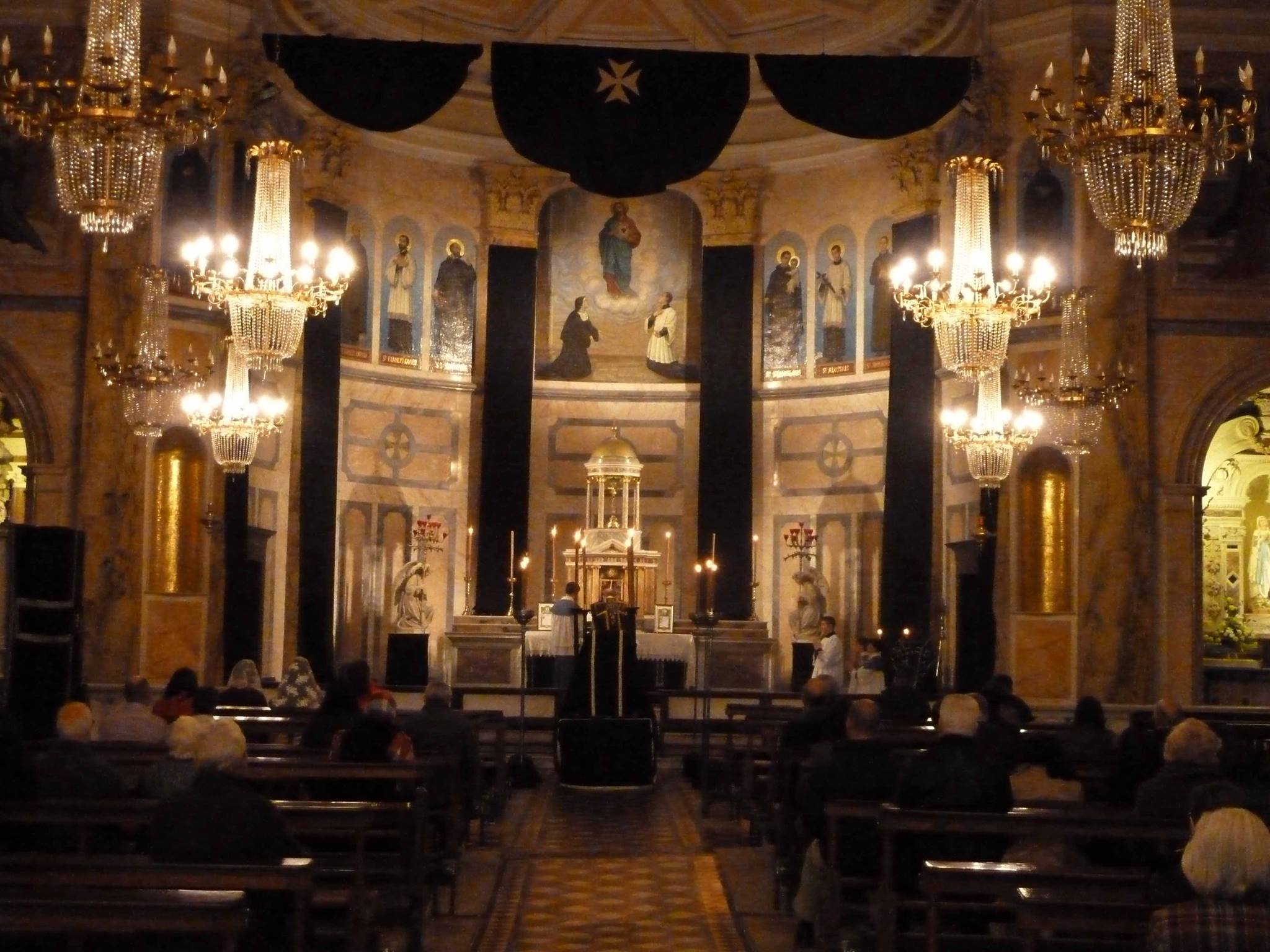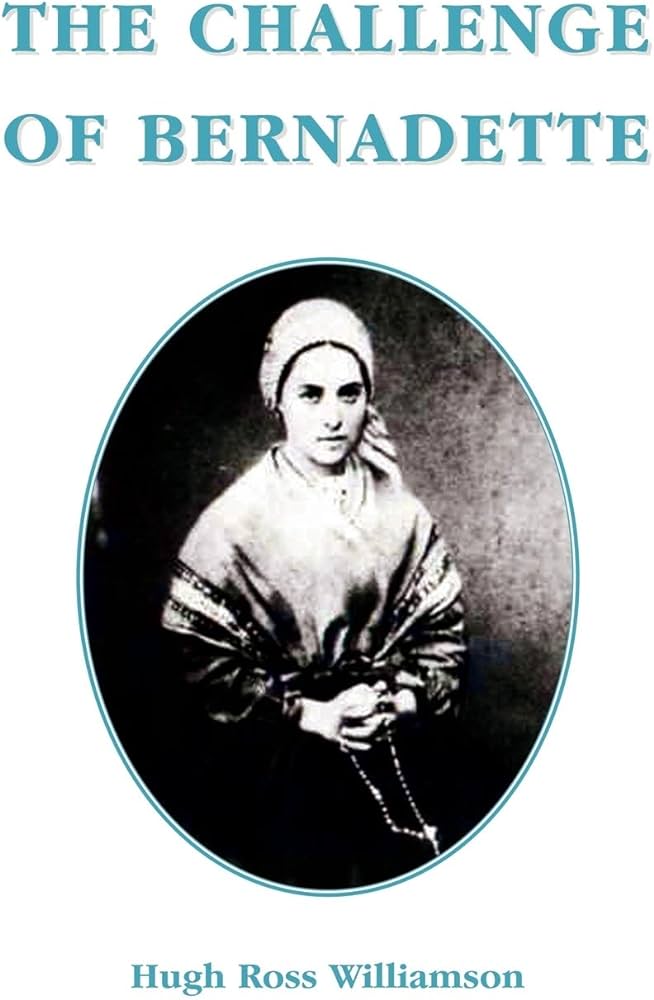
Today in the Traditional Calendar, we celebrate the Feast of St. Thérèse of the Child Jesus and the Holy Face (1873-97), otherwise known as St. Thérèse of Lisieux.
St. Thérèse is extremely well known for what she herself called her ‘Little Way’. She came to see that every little thing, each act, prayer and thought, could account in some way towards the path to holiness. Remaining small and insignificant along this path to holiness was what she meant by this ‘Little Way’.
St. Thérèse was the youngest of nine children, although only five children survived infancy. Born to saintly parents in northwestern France, both of whom had desired to become religious themselves, she was always treated as the baby of the family. She was even named ‘Little Queen’ by her dear father and loved, adored and often spoilt by her older sisters.
Thérèse had a deep devotion to and love for the Child Jesus and wished to be named after Him. She so desired to remain a child, to be her Beloved’s plaything, for Him to do whatever he wanted with her. Therefore, when, having entered Carmel, the Mother Superior gave her the name, Thérèse of the Child Jesus, she was overjoyed. For her relationship with the Saviour was always one of a child; child-like, but definitely not childish.
For, deep in her heart was a fiery passion to save souls and to suffer whatever the Lord called upon her to suffer for this incredible cause. And suffer she did, day in, day out, until her early death at twenty-four.
It was at only fifteen years of age, St. Thérèse entered the Carmelite convent at Lisieux. There, during the preparation interview, before her Profession, she was asked the reason for desiring to be a Carmelite. Thérèse declared:
I have come to save souls and above all to pray for priests.
And this is what she dedicated her life to, with total abandonment, praying for the clergy and making sacrifices for the conversion of souls. And because of these passions, she wanted to be sent on the missions. But, health being a great issue, it was not possible. Therefore her mission was to remain hidden in the cloister at Lisieux.
Let us look a little at Thérèse’s passion for saving souls, which began at merely twelve years old. But we must begin with a profound tragedy from her childhood.
At the age of four, poor Thérèse lost her dear, dear mother to cancer. The ‘impish’, strong-willed exuberant child she was, became shy and sensitive, easily brought to tears.
It was during Christmas of 1886, aged twelve that this period of her life was to end. Thérèse heard her father speak of her in a way that was hurtful. But, instead of her usual outburst of tears, she managed to overcome her hurt and appear joyful.
In other words, she found a way to love, even though she was hurting inside. Through this act, this change of behaviour, she was altered interiorly. Thérèse was convinced that this change was due to a special grace bestowed upon her by the Child Jesus. She refers to this as her conversion.
It was shortly after this that she was deeply impressed by an image of Jesus’ Sacred Wound to His hand. The corner of a prayer card became visible, having fallen slightly from her missal, revealing only this Wound.
Thérèse was penetrated by the thought of the Saviour’s Precious Blood falling from His Wound, with no-one to catch It. She became inflamed with an ardent passion to make use of the cleansing power of this most precious of gifts; our Lord’s Precious Blood.
In her autobiography, The Story of a Soul, she writes of this:
The cry of Jesus as He died, “I thirst”, echoed every moment in my soul, inflaming my heart with a burning love. I longed to satisfy His thirst for souls; I was consumed myself with this same thirst, and yearned to save them from the everlasting fires of Hell, no matter what the cost [Italics mine].
She was to hear of a hardened unrepentant criminal, Pranzini, soon to be put to death for murder. Thérèse longed to save his soul. She wrote:
I knew that by myself there was nothing I could do to ransom him; and so I offered for him Our Lord’s infinite merits and all the treasures of the Church.
Offering these intentions, Thérèse then prayed:
My God, I am sure You are going to forgive this wretched Pranzini, and I have so much confidence in Your mercy that I shall go on being sure, even though he does not go to Confession or show any sign at all of being sorry; but because he is my first sinner, please give me just one sign to let me know.
And St. Thérèse did indeed receive her sign. The day after the execution, she found a report that stated, when Pranzini was lead to the block, he suddenly turned to the priest behind him and grabbed the crucifix from his hands. He then kissed the Lord’s Sacred Wounds three times. Thérèse would later say:
This was my sign, and it touched me very much, since it had been the sight of the Blood flowing from one of these very Wounds that had given me my thirst for souls. I had wanted to give them His Precious Blood to drink to wash their sins away, and here was my ‘first-born’ pressing his lips to His Wounds. What a wonderful answer! After this, my desire to save souls grew day by day …
God had lifted me out of my narrow world in a very short time, and I had taken the first step, but the road ahead was long. However, freed from my scruples and over-sensitiveness, my soul grew.

Declaring that she ‘yearned to save [souls] … no matter what the cost’, seemed to forge the path forwards, one Thérèse would follow for the rest of her life. And the cost was dear. For suffer she did, immensely.
She suffered a dryness of spirit, she attributed to St. John of the Cross’ Dark Night of the Soul. Yet, onwards she trod, praying, offering herself still more.
She suffered the deep loss of those she loved, knowing that her path was one of detachment, whereby the deeper she plunged into the Heart of Jesus and His Holy Will, the less she could live by her own desires and wants.
And of course, she suffered bodily, haemorrhaging and spending the last months of her short life, terribly weakened by tuberculosis.
But she continued to strive to better herself, to make each little act for God, being misunderstood, unseen, for all her immense efforts.
But that is how she wanted to live. She even longed to be despised. For that is the way our Blessed Lord, her Holy Spouse was treated. And this was the meaning for her of the riches obtained through devotion to the Holy Face, which she also took for her name.
Knowing her earthly life was drawing to an end, Thérèse spoke of how she wanted to ‘spend her Heaven doing good on earth’, showering the earth with roses from the Heavenly Kingdom.
So, as we draw to a close, let us look to Thérèse’s beautiful image of our Lord’s garden, which she describes thus:
Jesus deigned to teach me this mystery. He set before me the book of nature. I understood how all the flowers He has created are beautiful, how the splendour of the rose and the whiteness of the lily do not take away the perfume of the little violet or the delightful simplicity of the daisy. I understand that if all the flowers wanted to be roses, nature would lose her springtime beauty, and the fields would no longer be decked out with little wildflowers.
And so it is in the world of souls, Jesus’ garden. He willed to create great souls comparable to lilies and roses, but He has created smaller ones and these must be content to be daisies or violets destined to give joy to God’s glances when He looks down at His feet. Perfection consists in doing His Will, in being what He wills us to be.
These very last words are key to Thérèse’s thinking. Surely, we cannot be more than we are, more than that which God intended us to be.
And with this thought, Thérèse saw how each little thing, whatever it be, could be changed, transformed into an act for God.
She may not have soared to the heights like her saintly foundress and namesake, St. Theresa of Avila. But she was no less saintly. For through her ardent love for Jesus and wholehearted abandonment to Him, she gave everything – her whole life – in order to be His instrument – to gain perfection through suffering for souls and praying for priests.
St. Thérèse of the Child Jesus and the Holy Face, pray for the conversion of sinners.
St. Thérèse of the Child Jesus and the Holy Face, pray for priests.
St. Thérèse of the Child Jesus and the Holy Face, pray for us.
And to conclude, here is a prayer for priests, composed by St. Thérèse herself:
O Jesus, eternal Priest, keep Thy priests within the shelter of Thy Sacred Heart, where none may touch them. Keep unstained their anointed hands, which daily tough Thy Sacred Body. Keep unsullied their lips, daily purpled with Thy Precious Blood. Keep pure and unearthly their hearts, sealed with the sublime mark of the priesthood. Let Thy holy love surround them and shield them from the world’s contagion. Bless their labours with abundant fruit and may the souls to whom they minister be their joy and consolation here and in heaven their beautiful and everlasting crown. Amen.
Buying Books at Amazon Through These Links Gives Us a Commission. This Supports Our Apostolate. Thank You if You Can Help Us Like This!




